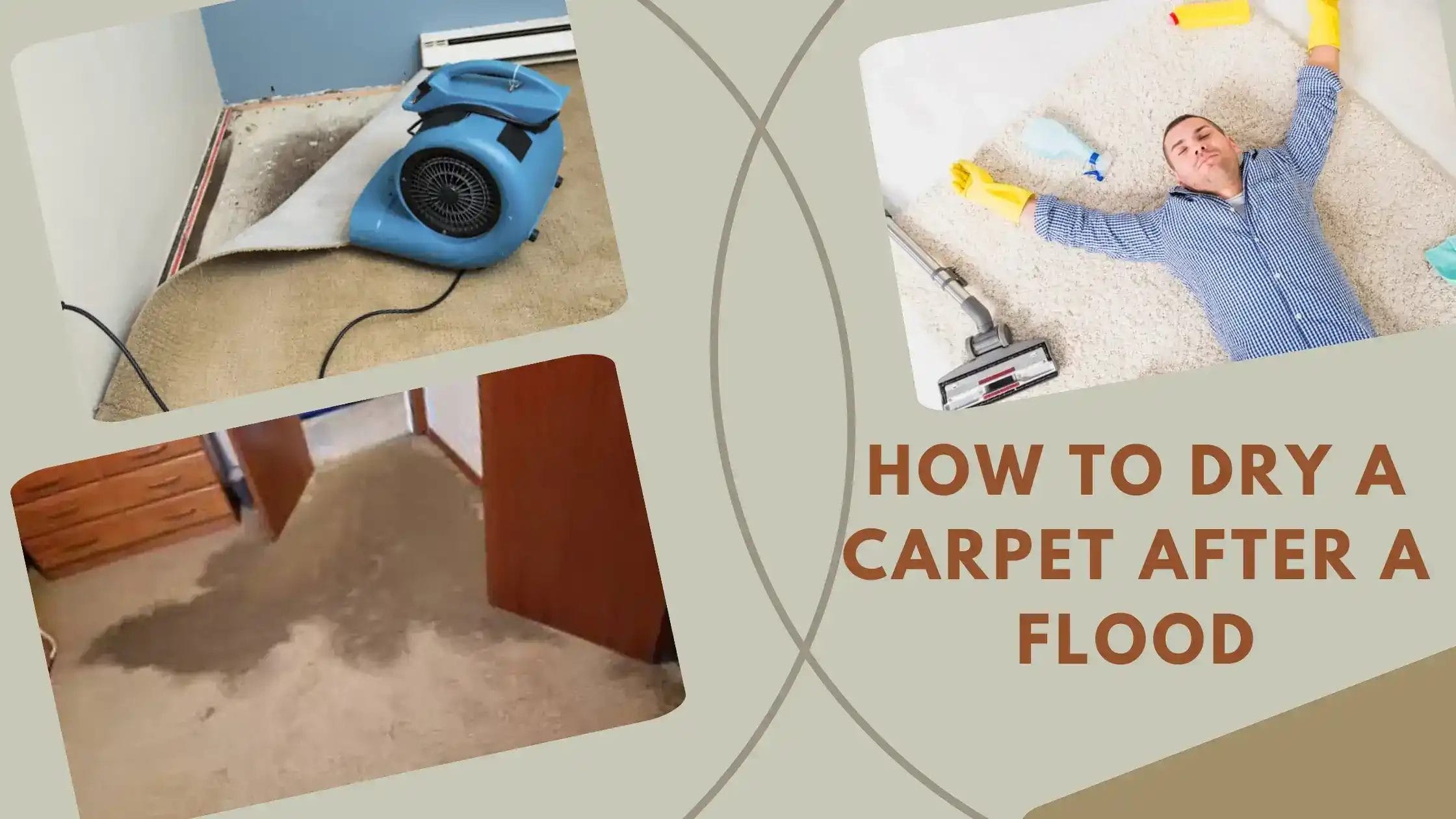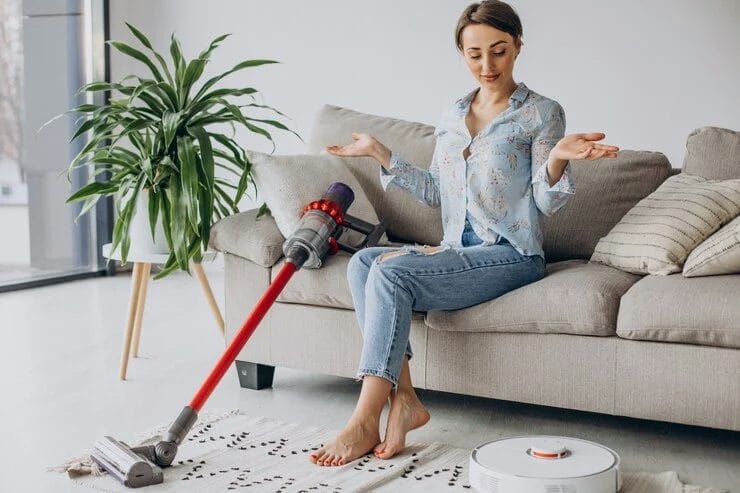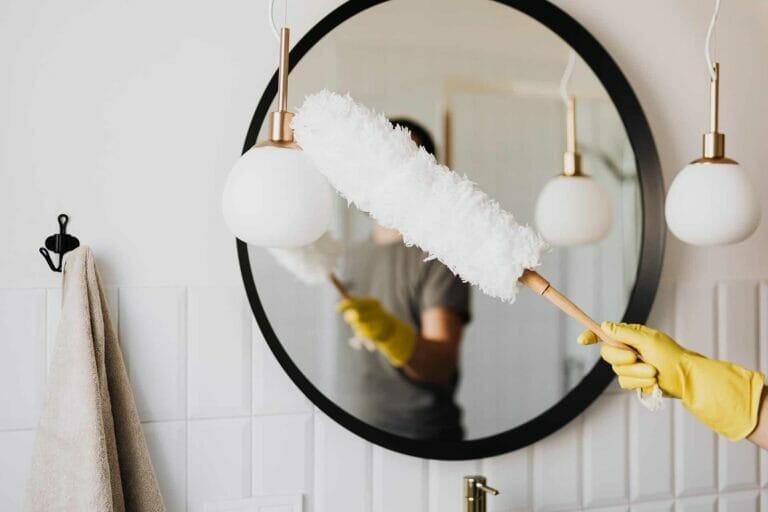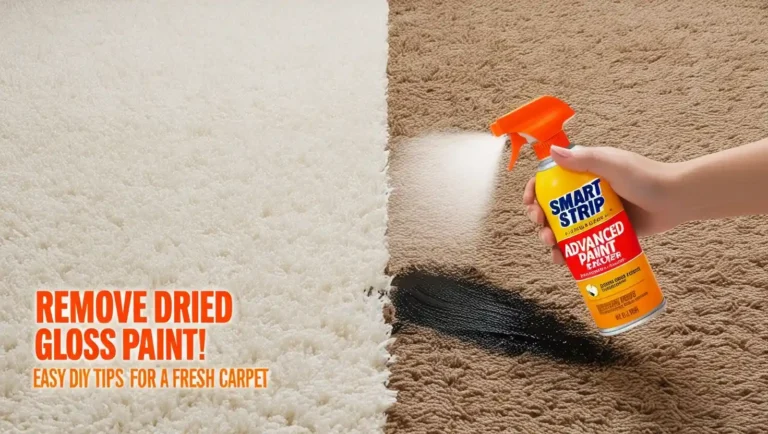How to Dry a Carpet After a Flood

Some of the ways highlighted below are the ones that will help you avoid mold and mildew in your home by making sure to Dry a Carpet After a Flood. Owners are the primary target of this step-by-step guide as the information that is presented offers valuable suggestions and tips that will help avoid additional problems and maintain the right conditions inside.
Understanding the Importance of Properly Drying a Carpet After a Flood
In a situation however, in which a flood takes place in your home through items like a burst pipe, top-heavy rain, or any other water-related incidences’ the right method for nurturing a flood that will create the carpet will entail certain measures to be taken to ensure the carpet is dried. If not carpet is clean it leads to the formation of molds and other mild growth on the carpet making it bad and in the same process, posing health hazards to you and the other members of your family.
The risks of mold and mildew growth
Mold growth and mildew are plants that thrive in dark and waterlogged conditions and carpet which has been rolled out to cover a place will certainly provide such a setting. For instance, when mold and mildew remain untreated, they grow very fast and the spores that are believed to cause all sorts of respiratory problems like illnesses, allergies, and others are released back into the air. Moreover, the presence of mold can altogether diminish the indoor air quality in your home.

The impact of moisture on the carpet and underlying Floor
When carpet and other underlying floor get wet, then they become a nightmare in the house due to the following reasons: It can cause the carpet fibers to wear out and deform, and this is a permanent loss for any carpet owner. Furthermore, moisture exposure can weaken the subfloor and result in the growth of molds, and wood rot production, it is expensive to repair this.
The importance of immediate action to Drying the Carpet
Water damage particularly if not removed on time poses a threat hence it’s important to attend to it as soon as possible to avoid the worsening of the situation or even the growth of mold. The longer the carpet is wet, the more it is bound to produce mold and mildew in the carpet fabric. Hence, it is critical to seek help and avoid exposing the affected area to moisture, which will help avoid a recurrence of the situation in your home.
Can I use a regular vacuum to remove water from my carpet?
No, a regular vacuum is not designed for water removal and can be damaged. Use a wet/dry vacuum specifically designed for extracting water from carpets and floors.

How can you tell if your carpet is wet?
You can tell if your carpet is wet by using a few simple methods. First, touch the carpet with your hand; if it feels damp or cool, it’s likely wet. Look for discoloration, as wet areas often appear darker and dry Rug area would be lighter. It is also important to note that wet smells like a musty or moldy smell also point toward the presence of moisture. Inspect for wrinkles, as carpets that have gotten wet will usually become loose and may fold in certain places. Wet carpets are a little heavier than the normal ones, therefore if the carpet feels harder to lift, it could have been wet. Also, check the carpet from below; if you can lift certain parts of it by pulling the corners, check the padding underneath; in case it is wet, then the carpet above it is also wet. How accurate is it it? Check it with a moisture meter to determine how wet the carpet is.
Assess the Flood Source and its Effects.
This is because there can only be one source of water, and this has to be determined before anybody deals with the flooded home. When one wants to lessen the intensity of the damage, one must identify whether it is clean water such as water from a burst pipe or water from the roofs, or if it is contaminated water such as black water from a sewage system or water from a stream. Second, it is necessary to assess the degree of the danger, which is the flood level, and based on this value estimate the extent of the possible damage to the parts of the building that were influenced by water.
Water damage is categorized into three types:
- Category 1 (Clean Water): Comes from a clean source such as a broken pipe or rainwater. This type of water poses the least health risk.
- Category 2 (Grey Water): Contains contaminants that may cause illness if ingested, such as water from a dishwasher or washing machine.
- Category 3 (Black Water sewage): Highly contaminated black water that may contain sewage, chemicals, or microbes. This water can pose serious health risks and requires professional cleanup.
Factors to Consider Before Drying Your Wet Carpet
Implementing preventive measures can minimize flood damage and make drying your carpet easier. These steps can protect your home and belongings from water damage.
Elevate Furniture and Electrical Items
Use furniture risers or blocks to lift furniture legs and electrical items off the carpet. This can help prevent water damage to your belongings and make the carpet drying process quicker and easier.
Seal Foundation Cracks and Gaps
Check your home’s foundation and walls for cracks and gaps, and seal them to stop water from coming in during a flood. This can help keep your carpets and other areas dry.
Install a Sump Pump
A sump pump can remove excess water from your basement or other low-lying areas during a flood. This helps prevent water from soaking into your carpet and causing serious damage.
Use Waterproof Barriers
Place waterproof barriers or sandbags around your home to direct water away. This can help keep floodwater out and protect your carpets and other belongings.
Maintain Gutters and Downspouts
Make sure your gutters and downspouts are clean and working properly to direct water away from your home’s foundation. This helps prevent water from seeping into your carpets.
Regular Carpet Maintenance
Regularly clean and maintain your carpets to prevent mold and mildew if flooding occurs. Well-maintained carpets dry more quickly and stay in better condition after a flood.

Step-by-Step Guide to Drying a Carpet After a Flood
Here, we provide a comprehensive guide on how to dry a carpet once it has been affected by the flood.
It is highly recommended to act fast in the event of a wet carpet because failure to dry it out quickly will result in the growth of mold, the erection of unpleasant smells, and possible harm to the floorings and subflooring. Here are seven expert tips for drying a wet carpet effectively: Here are expert tips for drying a wet carpet effectively:
- Act Quickly:
Some of the carpets be they dry or wet should start being dried to avoid further damage as much as possible. The longer the carpet stays wet, the more chances of molds and detrimental changes occurring in the structure of the carpet. - Remove Excess Water:
Sweep the area to accumulate all the water on the carpet then use a wet/dry vacuum to suck all the water from the carpet. Cover once the ground multiple times to ensure that most of the water has been wiped off. - Improve Air Circulation:
Open Windows and Doors: Ventilation also needs to be enhanced by opening windows and doors to enable fresh air into the limited space available. - Use Fans and Dehumidifiers:
Arrange the fans strategically in areas that are likely to take long to dry to enable faster drying to occur. Then turning on the dehumidifier will help remove moisture from the air, which can speed up the drying process. - Lift the Carpet:
If it is at all possible, take the carpet off the floor so that air can circulate under the carpet after vacuuming. Lay the carpet flat on the car and then support it at both ends, preferably with sticks, and put on the fans to blow air under it. - Apply Heat:
Place a heater or move the thermostat on the central heating system to increase the room temperature to dry the carpet. Also, ensure that you use extra precautions when using space heaters as a source of heat since they are potential fire risks. - Replace Carpet Padding:
It also has been observed that carpet padding is harder to dry than the carpet and may contain moisture. If the padding has become wet it is normally recommended that it is changed to avoid the growth of mold. - Clean and Sanitize:
After the carpet is dry, Vacuum clean it to remove any dirt and any contaminants that may have been left. Always drain or dry the floor to prevent the formation of mold or mildew then clean it with a sanitizer or an anti-microbial cleaner. - Check for Mold:
If it is then time to make sure the carpet and the surface beneath are checked for mold or mildew formation. Mold begins to grow in areas with moisture within 1 to 2 days after the formation of dampness on any material or surfaces. - Professional Help: For extensive water damage or if the carpet is not drying properly, consider
carpet cleaning services and hiring a professional water damage restoration service.
How Long Does It Take to Extra Water from a Carpet?
It is important to note that the time required to draw water out of a carpet will vary based on the area size and quantity of water absorbed. In a small to medium-sized room, with a size of that of a small living room or bedroom, that is around 200 to 400 square meters, it takes approximately 2 to 4 hours to use a wet/dry vacuum or professional apparatus to extract most of the water. For large areas more extensive or in severe floods, it would require between six to eight hours or even more in some incidences. Other factors as the type of carpet, the kind of padding on it, and how well the room is aired also influence the time it takes all things being equal.
Best Tips to Dry Wet Carpet
1. Safety Precautions and Initial Assessment
However, to avoid any dangers to people before the drying process starts it is always advisable to make sure the surroundings are safe. Switch off the electricity where you are working to prevent any possibility of shocks. Also, to avoid coming into contact with any risks or handling dangerous items, it is advisable to put on protective clothing including gloves and boots. Second, evaluate the severity of the water problem as a basis for determining the next steps. Identify the cause of flooding and the type of water that has entered the room/area. If the water is of category 3 (black water – sewage), then professional help for cleaning and water damage restoration is required.
2. Removing Excess Water and Moisture
It is therefore important to drain the carpet by eliminating as much water as can be fetched in a bucket. This can be done with extraction tools like wet/dry vacuums or carpet cleaning machines used at the site. These tools are quite useful since they can absorb water in the carpet and in the padding to make it dry as early as possible.
Other methods include the use of extraction equipment; after extraction then the leftover moisture is wiped using towels/ mops/ sponges among others. Similarly, when applying these materials on the carpet, it is possible to press them firmly so that it may be effective in extracting water from the fibers as well as the padding.
Furthermore, promoting ventilation and air circulation in the affected area can aid in the evaporation of moisture. Open windows, use fans and consider using dehumidifiers to reduce the humidity levels and speed up the drying process.

3. Drying the Carpet and Underlying Structures
Once the water damage has been assessed and the extra water is out of the premises, the process continues with the removal of carpet and other materials and ensuring that all of the water and moisture is gone. As a continuation of air drying, it is also important to use dehumidifiers as they increase the rates of moisture removal from the air. Place the dehumidifiers in the affected area to effectively cover the area and to ensure they are on for as long as it takes until the moisture level returns to normal.
In addition to the use of dehumidifiers, other drying methods including the use of fans and opening of windows will enhance evaporation of the remainder of moisture that is on the carpet and subfloor. One should check on the drying process always and make changes where necessary to the methods of drying.
4. Cleaning and Sanitizing the Dried Carpet
After the carpet is dry, it is crucial to remove and dispose of any grit, bacteria, or other contaminants that may have remained on the carpet after the flood and which could lead to further damage and health problems. Vacuum the carpet again so that all the dirt particles are cleared then wash it using either the carpet cleaner or the mixture of water and a spoonful of detergent.
Preventive Measures and Long-Term Solutions
However, to ensure that your home is shielded from future incidences of flood and dampness, it is important to incorporate precautionary measures as well as long-term control measures after moisture control of a flooded carpet.
Think about sealing the basement or any space capable of being penetrated by water and putting moisture barriers to discourage water penetration. Some protuberant issues include; aging pipes, leaking roofs, and damp floors among others, hence it is advisable to consult a plumber and have the plumbing checked often, and roofs and floors be checked with keenness to ensure no water damage occurs.
Contact a professional carpet cleaning agency or water damage firm for professional cleaning services to get rid of spots, mold, and mildew thoroughly. These professionals have the necessary knowledge, tools, and experience in water damage and mold restoration procedures to ensure that you and your home or business establishment are safe from such contamination.
Frequently Asked Questions (FAQs):
How do you clean your carpet after a sewage overflow?
Steam clean the carpet using hot water extraction to thoroughly sanitize and remove any remaining contaminants. This process helps penetrate deep into the carpet fibers to remove bacteria and odors.
How Quickly Does Mold Grow in Carpets?
Water in the carpets could breed mold within 24- 48 hours after the carpets have been soaked. Carpets are essentially, retentive in nature and can retain moisture, dirt, or any organic matter which is essential for the growth of mold. The mold can grow even faster in situations like high humidity, poor ventilation, or failure to dry carpet appropriately. Mold, once started, is very difficult to contain and leads to health issues and even more destruction. That’s why it is recommended to dry the carpets as soon as possible and properly if they get wet so that mold does not develop.
How do you dry wet carpets after water damage?
First, suck out the maximum amount possible using a wet/dry vacuum cleaner with copious amounts of water. Next, ensure you have arranged fans around the wet area so that they can assist in drying the carpet faster. One can dehumidify the air by introducing an air-dehumidifying machine into the room. In the case of carpet padding, it should be replaced as soon as it gets wet due to the risk of mold development. Step on it and pull it up to let the dirty air out this is true especially when vacuuming. Lastly, bring carpet cleaners to remove mold or mildew to prevent growth in the carpet.
How do you dry your carpet after a storm water flood?
First, personal protective equipment and shut down all electric power supply in the flooded zone. A wet/dry vacuum cleaner will be most useful in removing the water. Use fans to help air out the room and a dehumidifier to help the carpet dry along with getting the room’s humidity down. Finally, if the water is dirty, cone with a disinfectant to disinfect the carpet. Remove the carpet to properly dry it and the floor it rests on. While the above ideas may help deal with minor floods, it is still wise to seek the services of a flood damage cleaning company when faced with a severe case.
How Long Water Sat on Your Carpet
If the water from the carpet was not there for more than 24 hours then there is every possibility that the damage and mold would be minimized. If it has been 24-48 hours from the time of the disaster, there are high chance that mold has started growing and you need to find a solution. When this is the case then it is probable that water has been there for more than 48 hours and mold has developed therefore you need the services of a professional to sort out the problem.
Conclusion:
Therefore, the process of drying a carpet cleaning water damage after a flood is a very important step to prevent mold and mildew formation, further damage to the home and to ensure the safety of the occupants in the home. So, by performing a step-by-step guide and taking some precautions, you can act confidently if you experience water damage and avoid getting serious outcomes.





